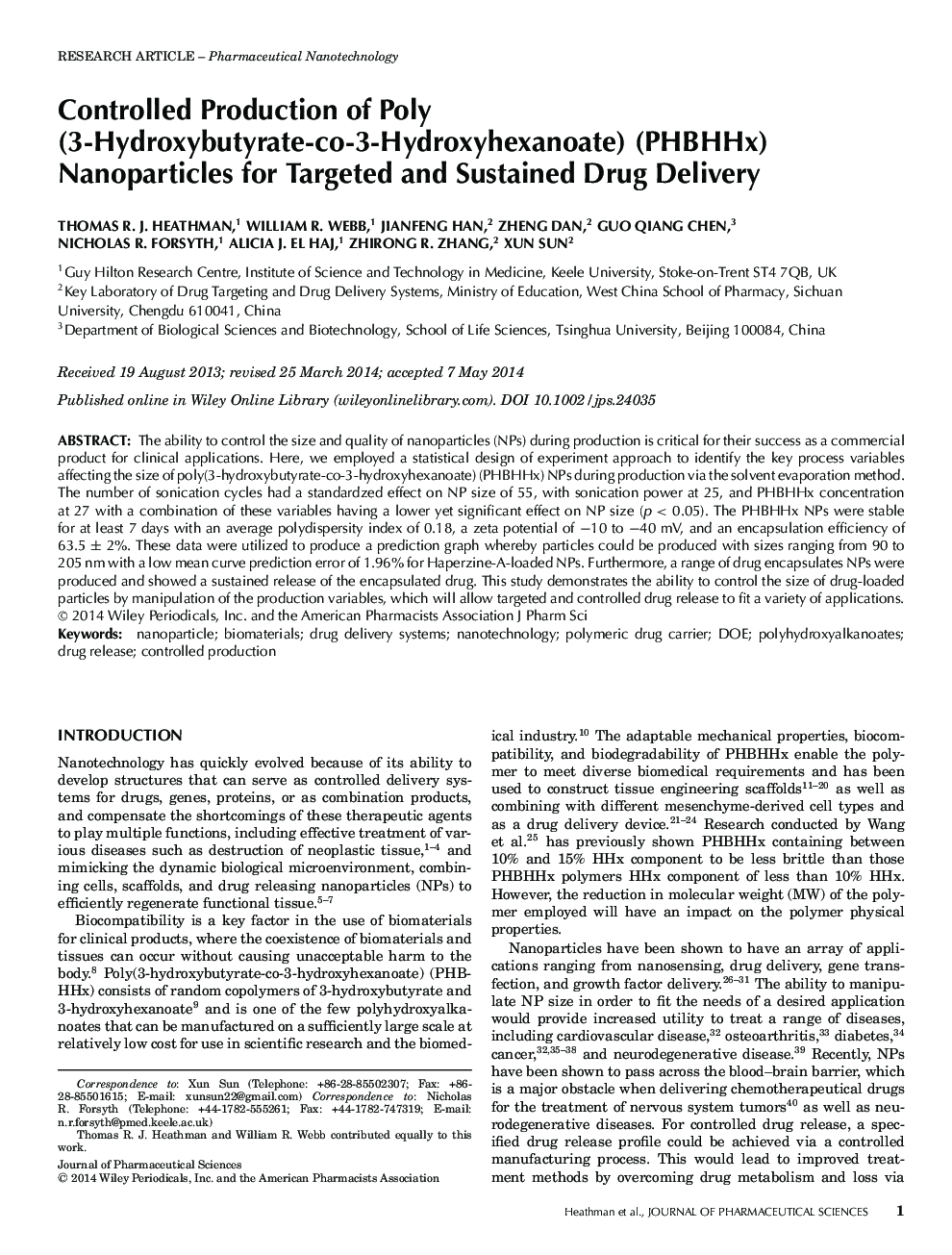| Article ID | Journal | Published Year | Pages | File Type |
|---|---|---|---|---|
| 10162328 | Journal of Pharmaceutical Sciences | 2014 | 11 Pages |
Abstract
The ability to control the size and quality of nanoparticles (NPs) during production is critical for their success as a commercial product for clinical applications. Here, we employed a statistical design of experiment approach to identify the key process variables affecting the size of poly(3-hydroxybutyrate-co-3-hydroxyhexanoate) (PHBHHx) NPs during production via the solvent evaporation method. The number of sonication cycles had a standardzed effect on NP size of 55, with sonication power at 25, and PHBHHx concentration at 27 with a combination of these variables having a lower yet significant effect on NP size (p < 0.05). The PHBHHx NPs were stable for at least 7 days with an average polydispersity index of 0.18, a zeta potential of â10 to â40 mV, and an encapsulation efficiency of 63.5 ± 2%. These data were utilized to produce a prediction graph whereby particles could be produced with sizes ranging from 90 to 205 nm with a low mean curve prediction error of 1.96% for Haperzine-A-loaded NPs. Furthermore, a range of drug encapsulates NPs were produced and showed a sustained release of the encapsulated drug. This study demonstrates the ability to control the size of drug-loaded particles by manipulation of the production variables, which will allow targeted and controlled drug release to fit a variety of applications. © 2014 Wiley Periodicals, Inc. and the American Pharmacists Association J Pharm Sci 103:2498-2508, 2014
Keywords
Related Topics
Health Sciences
Pharmacology, Toxicology and Pharmaceutical Science
Drug Discovery
Authors
Thomas R.J. Heathman, William R. Webb, Jianfeng Han, Zheng Dan, Guo Qiang Chen, Nicholas R. Forsyth, Alicia J. El Haj, Zhirong R. Zhang, Xun Sun,
